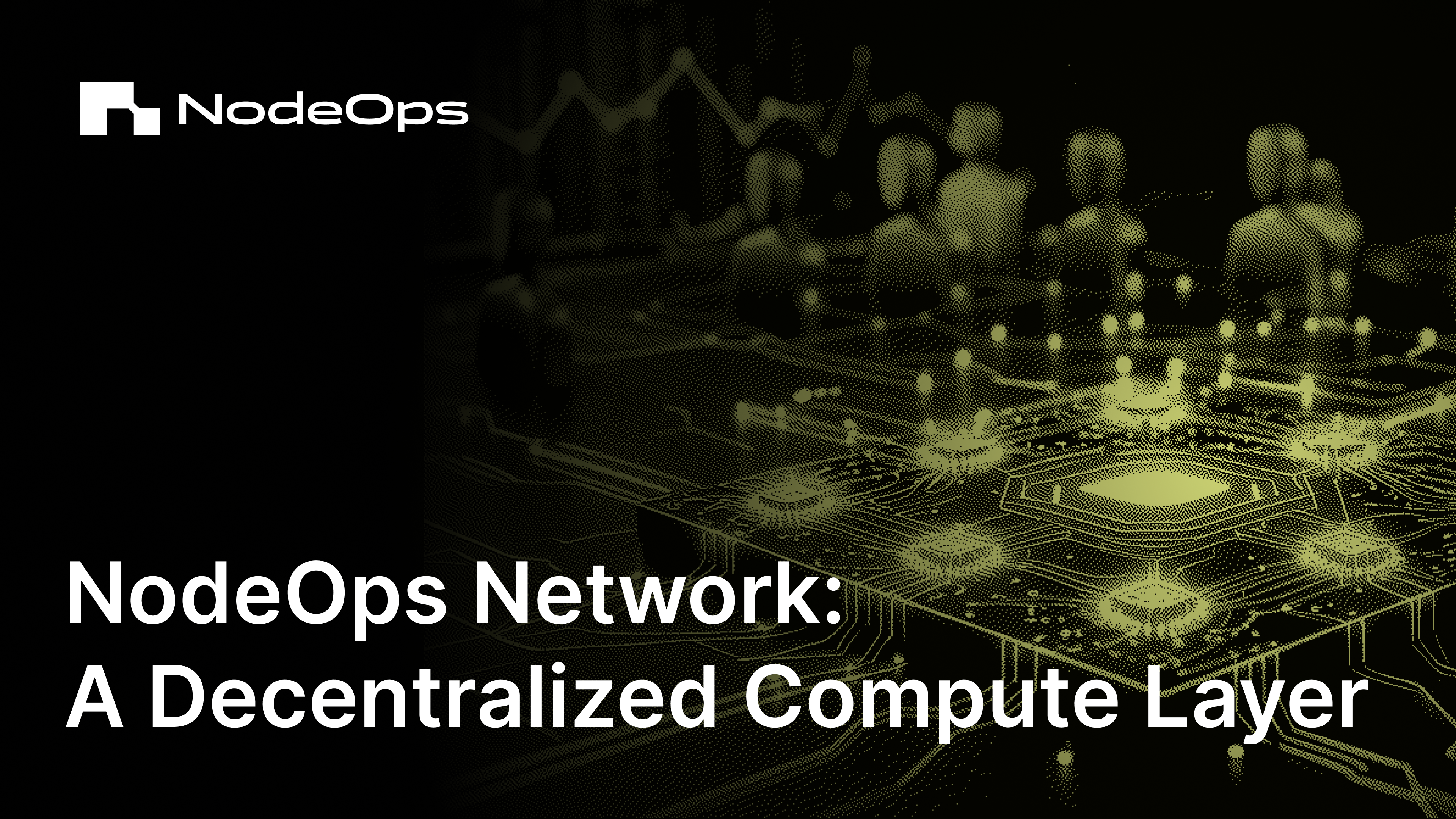NodeOps Network: a Decentralized Compute Layer
 NodeOps
NodeOps
Offering a solid product suite, with revenue and a thriving community
In a Web3 landscape often dominated by ambitious narratives but light on execution, NodeOps stands out as a project that delivers results.
As highlighted in Messari's recent report, since our launch in 2023 as a no-code deployment tool for blockchain Nodes, NodeOps has evolved into a full-stack decentralized physical infrastructure network (DePIN). Today, we orchestrate Compute workloads across a globally distributed mesh of independently operated machines.
This transformation reflects a broader trend in Web3: infrastructure is no longer just backend plumbing, it’s a competitive battleground.
Breaking the stack: Nodeops' two-pronged approach
NodeOps operates with a bifurcated architecture that separates its core infrastructure from user-facing tools:
The NodeOps Network: This decentralized platform routes tasks, verifies execution, and assigns economic weight to uptime and performance. It is secured by AVS-enabled restaking of Layer 1 (L1) assets, ensuring robust validation of off-chain Compute workloads.
A growing product suite: Tools like Console, NodeOps Cloud, Validator, and Agent Terminal turn the backend into accessible solutions for developers, validators, AI engineers, and even non-technical users.
This dual-layer design ensures that both technical and non-technical audiences can leverage NodeOps to deploy and manage complex workloads seamlessly.
Economic strength without speculation
Unlike many Web3 projects reliant on speculative tokenomics, NodeOps generates direct revenue through service subscriptions. These subscriptions are payable in fiat, stablecoins, tokens, or the platform's native $NODE token. Compute providers benefit from:
25% of subscription revenues.
Pro-rata rewards from a 15% allocation of the $NODE token supply.
Additional incentives via the NodePoints campaign (32.3M NP issued to date).
NodeOps employs a dual-token model:
$NODE: Powers staking, validation, and governance.
$UNO: A profit-sharing token offering quarterly revenue shares and fee discounts to ecosystem participants.
This sustainable economic model positions NodeOps as one of the few DePINs thriving without relying on speculative hype.
The orchestration edge
NodeOps isn’t competing with centralized cloud providers on raw computing power. Instead, it focuses on solving the harder problem: orchestration. Its YAML-based templates, auto-deployment capabilities, and AI-enhanced infrastructure management make it easy for users to handle complex workloads like AI inference, decentralized application Nodes (DA Nodes), and validator operations.
The orchestration layer doesn’t just rent out machines—it enforces service-level agreements (SLAs) to ensure usability. This differentiation makes NodeOps indispensable for those seeking reliable decentralized Compute solutions.
Competitive positioning: execution over hype
Within just 18 months of launch, NodeOps has become one of the top three DePINs by annual recurring revenue (ARR), per depin.ninja.

Our rapid growth is fueled by its execution velocity and community-driven scale. Partnerships with projects like EigenLayer and OraiChain further enhance its ecosystem, while modular templates for Compute infra deployment ensure it remains developer-friendly.
Roadmap: scaling toward decentralized dominance
Looking ahead beyond Q1 2025, NodeOps aims to scale its network to one million Compute Units with 70% utilization. The roadmap includes:
Vertical-specific adoption across AI, gaming, blockchain, and media.
Advanced features like Trusted Execution Environment (TEE)-powered key management.
Symbiotic AVS staking pools for enhanced security and composability.
NodeOps envisions itself as the backbone of verifiable infrastructure—decentralized yet accessible to all. Capturing even 1% of the $750B cloud market may seem ambitious, but for this protocol in its early stages, we’ve developed a realistic and transformative wedge into an established industry.
Subscribe to my newsletter
Read articles from NodeOps directly inside your inbox. Subscribe to the newsletter, and don't miss out.
Written by
